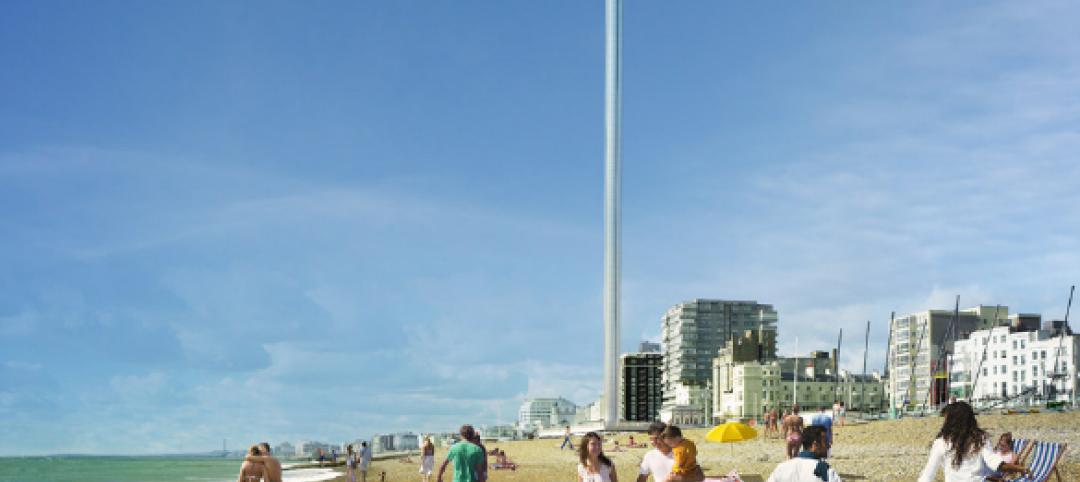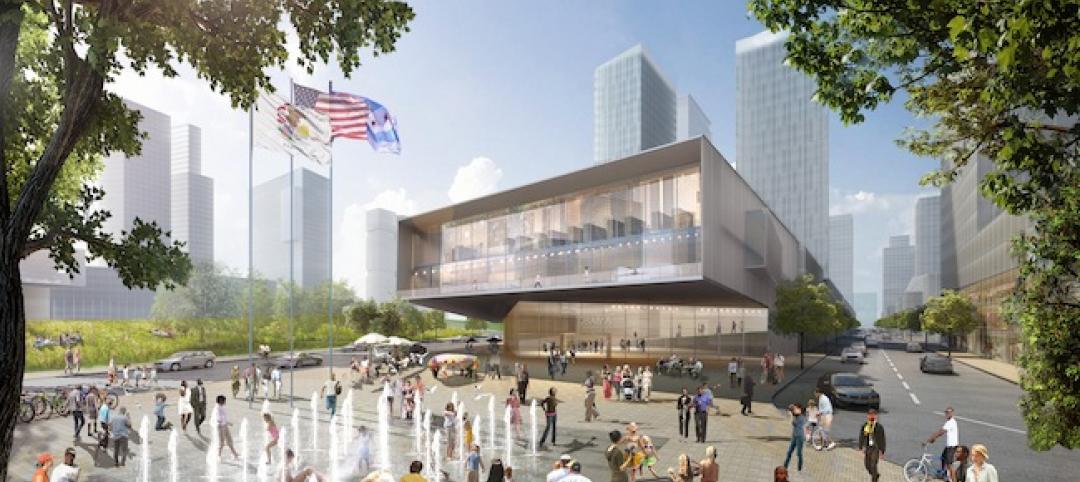The Old Patent Office Building in Washington, D.C., completed in 1867, houses two Smithsonian Institution museums—the National Portrait Gallery and the American Art Museum. Collections include portraits of all U.S. presidents, along with paintings, sculptures, prints, and drawings of numerous historic figures from American history, and the works of more than 7,000 American artists. Following a major renovation, these national treasures, as well as long-hidden architectural features of the 380,000-sf Greek Revival building, can now be viewed in natural light for the first time in decades.
The restoration project Building Team, led by Hartman-Cox Architects, Washington, restored and showcased elements such as the porticos modeled after the Parthenon in Athens, a curving double staircase, colonnades, vaulted galleries, massive windows, and block-long skylights. The effort also restored full visitor access and circulation on all three floors by relocating staff offices to an adjacent building, while opening up 40,000 sf for galleries by removing infill walls and partitions.
The Building Team made extraordinary efforts to use new preservation technologies for restoration of the historic fabric of the building and to re-use historic materials. This included the replacement of the roof with a standing and flat-seam copper exterior. More than 550 windows were replaced, each with an energy shield and UV filter to protect the artworks, while the exterior layer was done in mouth-blown glass, emulating the look of historic glass.
Original marble pavers were salvaged, numbered, restored and reinstalled throughout the building. White oak wood floors consistent with the original design were installed in the remainder of the building.
The project also added several new spaces, two of which are open to visitors—the Lunder Conservation Center and the Luce Foundation Center for American Art. In addition, the Robert and Arlene Kogod Courtyard and the Nan Tucker McEvoy Auditorium, a 346-seat multipurpose space with advanced audio-visual capabilities that was constructed beneath the courtyard, add to the museum's versatility. New monumental stairs and an elevator were added to connect the public entrances at G Street to the auditorium.
A key component of the project was the wholesale replacement of mechanical and electric systems to bring the facility up to current museum standards for lighting and temperature control. As a solid masonry building, however, there was no plenum space in which to place the new systems. The Building Team concealed the M/E components within former ventilation and chimney shafts and under the floors. This set up required modification to the chases to accommodate ductwork and piping. New boilers, chillers, cooling towers, air-handling units, fan coil units, pumps, duct work, and piping were installed so that they would not intrude within the gallery spaces.
Infrastructure modernization included a new telecommunications system with new fiber optic and copper cable, a new fire alarm system (including addressable smoke and heat detectors), and upgrades to the existing fire protection system. A new security system, including glass break and shock sensors, motion detectors, and cameras, will help guard the priceless exhibits.
Restoration of architectural detailing included replacement of worn encaustic and geometric tiles in the Great Hall with handmade, historically accurate, multi-colored replicas produced in England. On the exterior, workers cleaned, patched, and pointed the stone facades.
“The architectural details of the Smithsonian Portrait Gallery restoration were extremely carefully thought out,” said Walker Johnson FAIA, honorary chair of BD+C's Reconstruction Awards program. “The inclusion of mechanical elements within this bearing wall structure is an indication of the length the Building Team went to maintain the original design while still modernizing and restoring the building.”
All told, Hartman-Cox Architects and construction manager Bovis Lend Lease coordinated architects, engineers, and designers from more than one dozen consulting firms representing more than 20 different design disciplines, and prepared four different prime construction contracts for the $283 million renovation. The revitalized building, a major focus of a revitalized downtown Washington, is once again a showpiece for the nation's capital.
Related Stories
| Jun 26, 2014
Plans for Britain’s newest landmark brings in international cooperation
Designers of the London Eye will team up with companies from France, the Netherlands and the United States to construct i360 Brighton, the U.K.'s newest observation tower.
| Jun 25, 2014
Frank Lloyd Wright’s Spring House, Cincinnati’s Union Terminal among 11 Most Endangered Historic Places for 2014
The National Trust for Historic Preservation released its annual list of 11 Most Endangered Historical Sites in the United States for 2014.
| Jun 23, 2014
Gehry's 'glass sail' cultural center for Foundation Louis Vuitton set to open in October
Comissioned by Bernard Arnault, American legendary architect Frank Gehry's newest structure in Paris for Foundation Louis Vuitton will house eleven galleries and an auditorium for performing arts.
| Jun 20, 2014
HOK releases proposal for Obama Library and Museum Campus
Proposal would locate the library in Chicago's historic Bronzeville neighborhood, aiming for urban revitalization as well as Living Building certification.
| Jun 20, 2014
Sterling Bay pulled on board for Chicago Old Main Post Office project
Sterling Bay Cos. and Bill Davies' International Property Developers North America partner up for a $500 million restoration of Chicago's Old Main Post Office
| Jun 19, 2014
First look: JDS Architects' roller-coaster-like design for Istanbul waterfront development
The development's wavy and groovy design promises unobstructed views of the Marmara Sea for every unit.
| Jun 18, 2014
Six World Cup stadiums have achieved LEED certification
In conjunction with the 2014 FIFA World Cup in Brazil, the U.S. Green Building Council (USGBC) announced that six World Cup stadiums have achieved LEED certification, including South America’s largest stadium, Maracanã in Rio de Janeiro.
| Jun 18, 2014
Study shows walkable urbanism has positive economic impact
Walkable communities have a higher GDP, greater wealth, and higher percentages of college grads, according to a new study by George Washington University.
| Jun 18, 2014
Arup uses 3D printing to fabricate one-of-a-kind structural steel components
The firm's research shows that 3D printing has the potential to reduce costs, cut waste, and slash the carbon footprint of the construction sector.
| Jun 16, 2014
6 U.S. cities at the forefront of innovation districts
A new Brookings Institution study records the emergence of “competitive places that are also cool spaces.”














